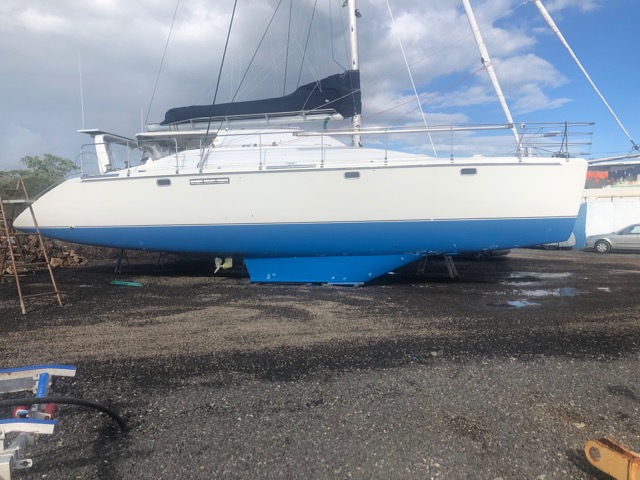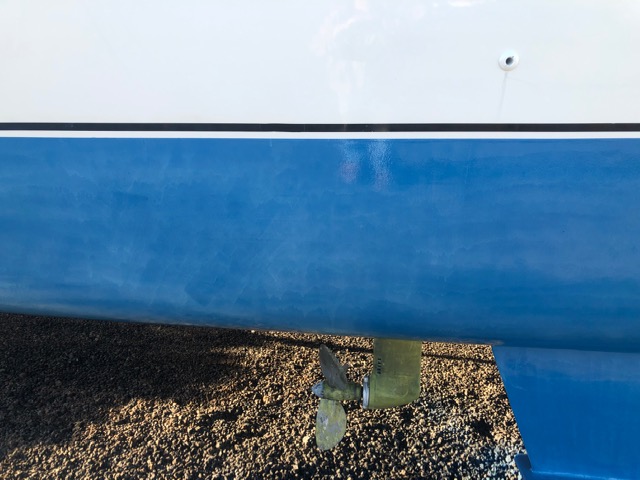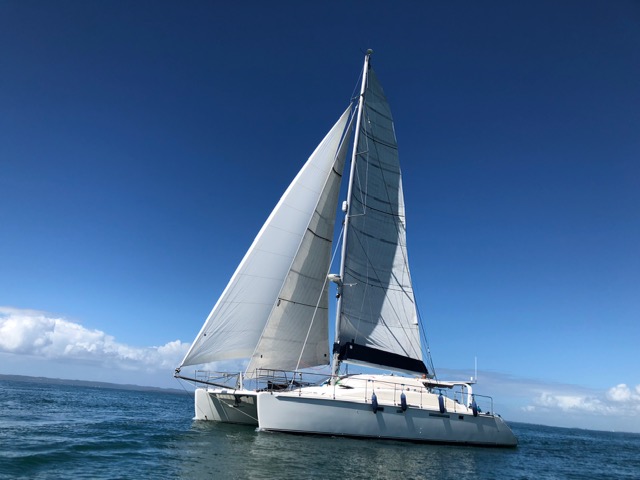Estoy muy feliz con su producto, las hélices han sido una excelente combinación con el barco y los nuevos motores Yanmar 4JH80. Los nuevos motores son un sistema common rail de gestión electrónica, por lo que es muy fácil ver en los instrumentos las pequeñas diferencias. Mientras navego con ambos motores al ralentí, si izo una vela, puedo ver cómo disminuye el consumo de combustible. Sin embargo, donde las hélices entran en juego es en situaciones exigentes, como atracar en espacios reducidos, en una nueva marina donde la marea o el viento dificultan la maniobrabilidad. El empuje y la respuesta hacen que atracar en nuevos lugares en condiciones difíciles sea pan comido. En otra ocasión, estaba navegando con un oleaje de 3 metros en el que el barco se manejaba con facilidad a RPM bajas. Creo de nuevo que la combinación de las hélices y el motor fue la razón. Ahí surgen algunas cifras interesantes del rendimiento de los barcos en comparación con el “A….”, con la hélice EWOL y el motor a 2.500 RPM, el barco navega a 9,5 nudos utilizando 3,5 litros de combustible por motor. Con la hélice A…. Aunque tienen un diámetro de 17 pulgadas, el barco para las mismas RPM 2500 solo hace 8 nudos y usa 4,7 litros por hora por motor. Encuentro la diferencia en el manejo del catamarán muy notable, especialmente cuando trato de colocarlo en un puerto deportivo concurrido. Con el EWOL tengo el control en la punta de los dedos a muy bajas RPM, sin embargo con A…. tenía que usar muchas RPM para obtener una respuesta.
D.C. – Australia
Original Text
I am more than happy with you product, the propellers have been an excellent combination with the boat and the new Yanmar 4JH80 engines. The new engines are a common rail fuel system which is computer controlled therefore it is very easy to see on the instruments even slight differences. While underway with both engines just idling over if I pull up a sail I can see the fuel consumption drop.
Where you propellers come into their own however is in tight situations like docking while travelling in tight situations , in a new marina where the tide or wind is causing problems. The thrust and instant response is amassing making docking in new places under difficult conditions a piece of cake. On one other occasion I was crossing a coastal bar when I encountered a 3 meter swell in which the boat just handled with ease at lower RPMs. I believe again the thrust engine combination was reason .
There some interesting figures come out of the boats performance by comparison of the “A…prop” and the EWOL prop At 2,500 RPMs. The EWOL props push the boat along at 9.5 knots using 3.5 litres of fuel per side.
With the A…prop although they are 17 inch in diameter the boat for the same RPM 2500 is only doing 8 knots and using 4.7 litres per hour per side.
I find the difference in handling the cat very noticeable especially when trying to position the boat in a busy marina. With the EWOL I have fingertip control at very low RPM but the A…. Prop I have to use lots of RPM to get a response.
D.C. – Australia








